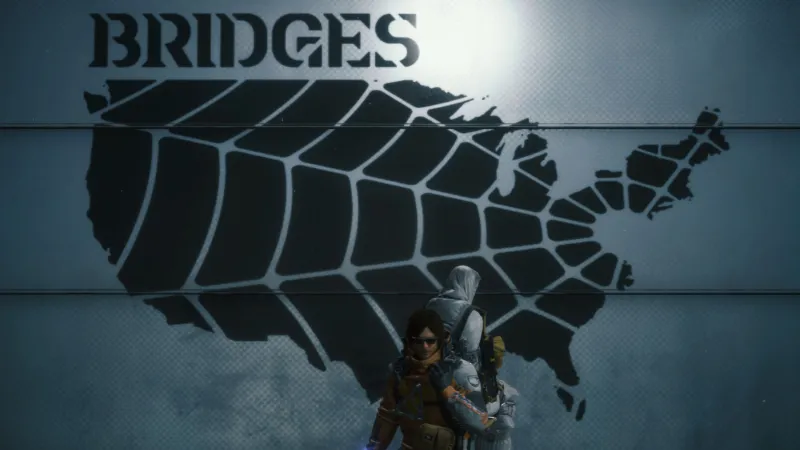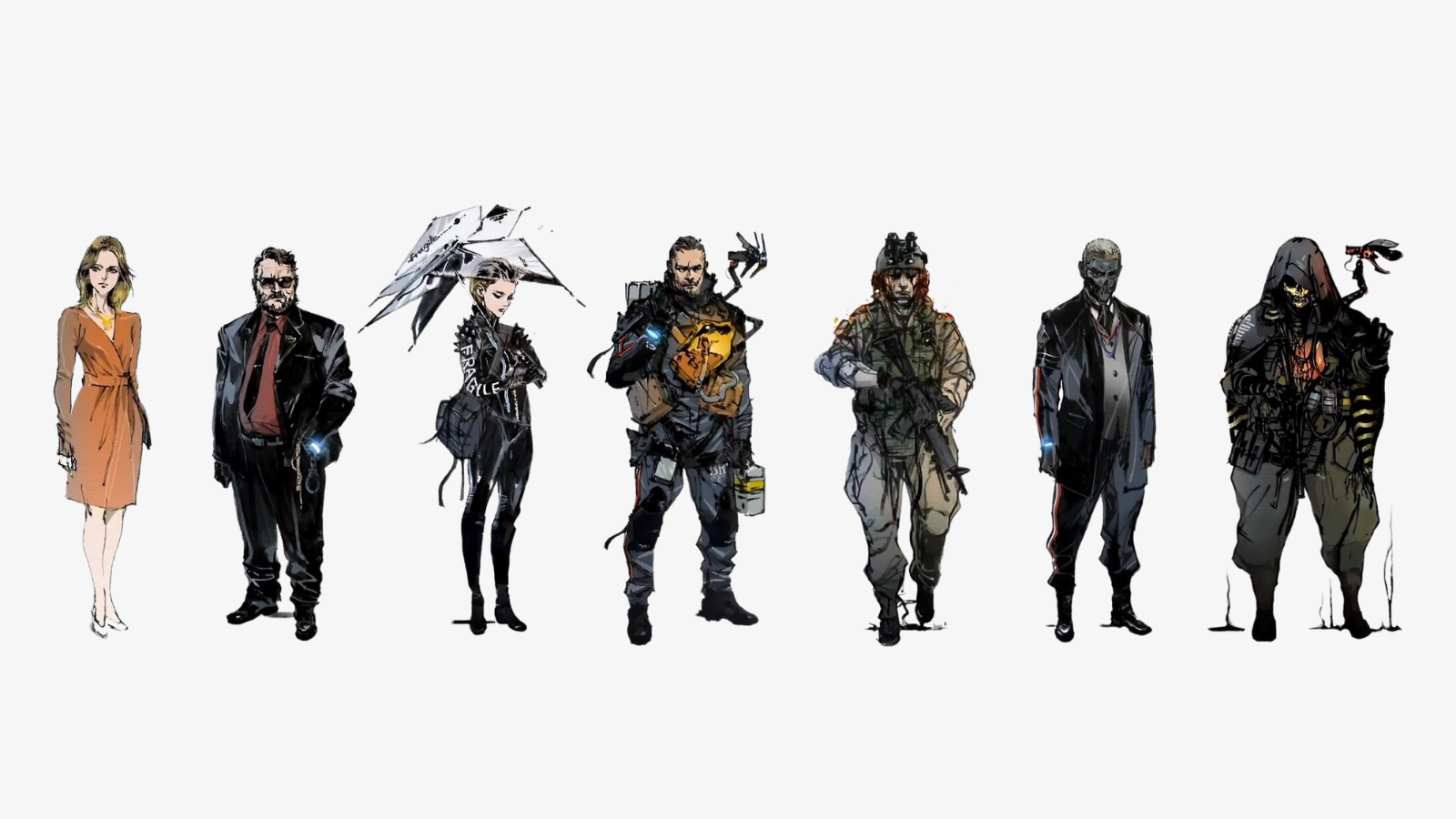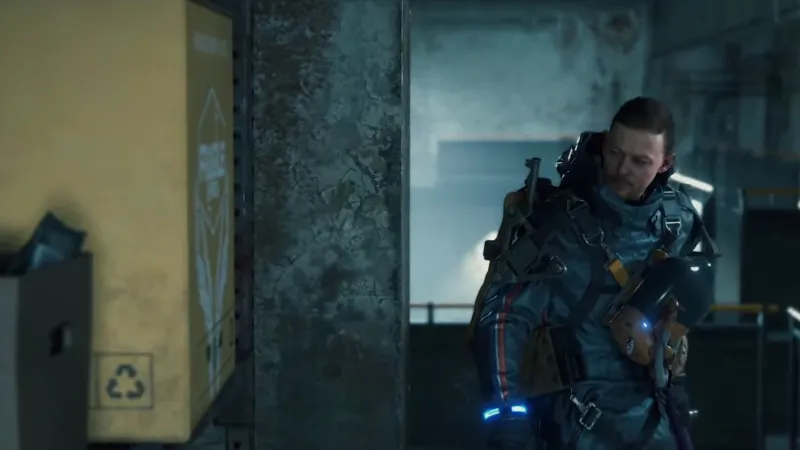Admittedly, it’d take very little for me to be on board with a Death Stranding Director’s Cut. It only needed to be more Death Stranding for me to be sold on revisiting Hideo Kojima’s latest vanity project. Luckily for me, that’s exactly what the Director’s Cut is. I love the original release, and this is a perfect excuse to dive back in. I think you should play it, too. But maybe not for the reasons you think.
Death Stranding Director’s Cut is pitched as an expanded version of the base game that came out in 2019, the definitive version of Kojima’s vision. After 26 hours – and much, much more still to go – my knee-jerk impression is that the Director’s Cut moniker is marketing spiel more than anything. Still, there are some fun and creative new additions that enhance the overall experience.
For new players, all the bells and whistles you’ve come to expect from PlayStation re-releases are present in Director’s Cut – performance/resolution modes, unbelievably fast load times, 60 frames per second, and all that good stuff. More interestingly, new missions and deliveries have been added into the game somewhat seamlessly; they appear within the primary campaign itself rather than offset as the “New Content.”

Returning or revisiting players are likely to get more out of these additions solely based on prior experience with the game. And to be fair, some of the additions are really good. I especially liked the cross-over with Valve’s Half-Life Alyx, which puts the Gravity Glove into Director’s Cut (this was in the PC version of Death Stranding, but this is the first time it’s been on console), allowing you to grab items in the world without actually walking over to them. The Maser Gun, which quickly incapacitates human enemies with a bolt of electricity, is also a great touch – though the game’s wonky aiming makes the weapon better for stealth than combat. The new racetrack makes for a fun diversion to the main path, but the game’s poor car controls mean it can be frustrating when you’re constantly crashing against walls. A Jump Ramp for motorcycles is fantastic because you can do sick stunts. Lastly, new songs included within new porter missions are all consistently solid. And as an aside, the way the game – both Director’s Cut and the original release – implements licensed music into its mission structure is so good; I wish all games were as clever in their use of music as Death Stranding.
Importing a PlayStation 4 save means you can instantly access a lot of the new content in Director’s Cut. However, if you’re like me and want to start a new playthrough of Death Stranding, know the new stuff is scattered throughout the game’s entire campaign. At 26 hours into my playthrough, there’s still a lot, if not a majority I haven’t found – I cannot wait for the Cargo Catapult in Chapter 5. I think this is a smart way to implement new elements into the game and the best way to experience it; I feel like I’m stumbling upon it organically rather than just running down a checklist of everything I haven’t seen before. When I come across something that wasn’t in the base game – sometimes after hours and hours of old content – it makes the game feel fresh and new, even if it’s not.
The Director’s Cut is the best way for newcomers to experience Death Stranding in some respects, but I wouldn’t discount buying the base game if you want the original experience instead. Both ways have their merits. I haven’t personally found anything in Director’s Cut that radically changes the core Death Stranding experience in such a way that it’d be impossible to play anything but – especially if you want to save a little money by buying the original release.
But none of this really gets at the core of why I think you should play Death Stranding.

A Messy, Holistic Experience
The more time I spend with Director’s Cut, the less interested I am in running down a list of new or old mechanics – which sits at odds with my assignment: write a simple impressions piece on the game’s new content. The Gravity Glove is nifty, for sure, and the race track is fun enough, but I wouldn’t say any of the new content alone is reason to run out and buy Death Stranding Director’s Cut. At the same time, I think you should play Death Stranding if you haven’t, and the Director’s Cut only reinforces that opinion. My impression is this game needs to be experienced, no matter what form you decide to play.
What makes Death Stranding great, and why I think it’s one of the best games of the last generation, has less to do with any individual aspect and more to do with the entire package. As a triple-A, Sony-published video game, Death Stranding is a baffling product. Not in the sense that its lore is confusing – it’s not; it’s remarkably straightforward within its fiction. Instead, Death Stranding is simultaneously a masterclass in holistic game design – make no mistake, the game is literally about walking from here to there – combined with one of the thematically messiest stories I’ve ever experienced. Kojima is wildly all over the place with what he seems to think about any given topic, leading to a lot of contradictory ideologies. But in all respects, Death Stranding’s earnestness seeps out of every pixel.
Playing Death Stranding, you get the sense that Kojima put it all on the table – his ideas about the video game industry, climate change, and for whatever reason, westward expansion and the dream of an America that maybe never existed. That the majority of the game is, in the purest sense, a walking simulator, where you manage balance, stamina, and the weight on your back, is a daring gameplay choice ostensibly meant to alienate some players. And in 2021, a game about a world-shattering event that forces everyone inside and away from human contact hits harder than when the game was first released in 2019. I think Kojima stumbled into that coincidence, but it gives the events of Death Stranding more gravity regardless.
I love Death Stranding for everything it is. More so than almost any game last generation (save for maybe Nier Automata), it’s a game I find myself thinking about and reminiscing on; I often pull up YouTube videos just to see it in action or hear someone talking about it. Part of this comes down to the core gameplay. Walking from point A to B, delivering packages, is a meditative and calming experience for me. I enjoy planning my routes, assembling my cargo, and setting out across the vast reaches of nothingness. I love that nothingness more than anything else in the game. When Death Stranding does eventually dip its toes into action, I don’t like it as much.
I admire the way the game goes against trends. While many games try and cater to the player’s every want and need, Death Stranding requires you to meet it on its terms. Playing the game is challenging and obtuse. Mastering the game requires patience and commitment. You’re not running around, clicking on the bad guys’ foreheads, watching blood and sparks go everywhere. You’re largely alone in this world, putting one foot in front of the other in a way that’s often tedious and monotonous in the moment but immensely satisfying at the end of any given journey.

As an entire piece of work, Death Stranding largely stands on its own. There are, truly, not many other games like this from a narrative and mechanical standpoint – and that includes Kojima’s other work. The story’s attention to detail to a meticulous degree, the way it builds its lore and universe is fascinating. Even if it doesn’t always stick the landing – Kojima has a habit of thinking his concepts are harder to grasp than they actually are, leading to a lot of over-explanation – the commitment to world-building in a way that’s believable if you’re willing to buy into its fiction creates something unlike much else in video games. There’s an almost literary quality to the way Death Stranding takes its time to establish every minute detail in its lengthy story. You can argue Kojima’s previous Metal Gear series did the same thing narratively, but those games don’t reach quite as far as Death Stranding when it comes to obtuse game design. If anything, the closest thing to Death Stranding might be P.T., the “playable teaser” for Kojima’s infamously cancelled Silent Hill reboot, which was similarly inscrutable at times.
The fact that Death Stranding exists isn’t surprising. The fact that Death Stranding exists as a Sony first-party release costing untold millions of dollars, with a full-blast marketing campaign reserved for only the biggest games, and celebrities a lot of games couldn’t afford, is one of the most surprising things that’s ever happened in the game industry, as far as I’m concerned. I’m so glad it does exist, though.
If you’ve never played Death Stranding, I think you should. Whether it’s the original release or the new Director’s Cut, the game is worth experiencing. Not to say it’s perfect by any means (read Game Informer’s review for a second opinion). But there’s nothing like Death Stranding. And there may never be again; I struggle to think Sony or any other publisher will ever let Kojima be this free a second time – at least not with this kind of budget. That’s what makes Death Stranding worth experiencing. Gravity Gloves, race tracks, and cargo catapults are just icing on the cake.
Stay connected with us on social media platform for instant update click here to join our Twitter, & Facebook
We are now on Telegram. Click here to join our channel (@TechiUpdate) and stay updated with the latest Technology headlines.
For all the latest gaming News Click Here
For the latest news and updates, follow us on Google News.
